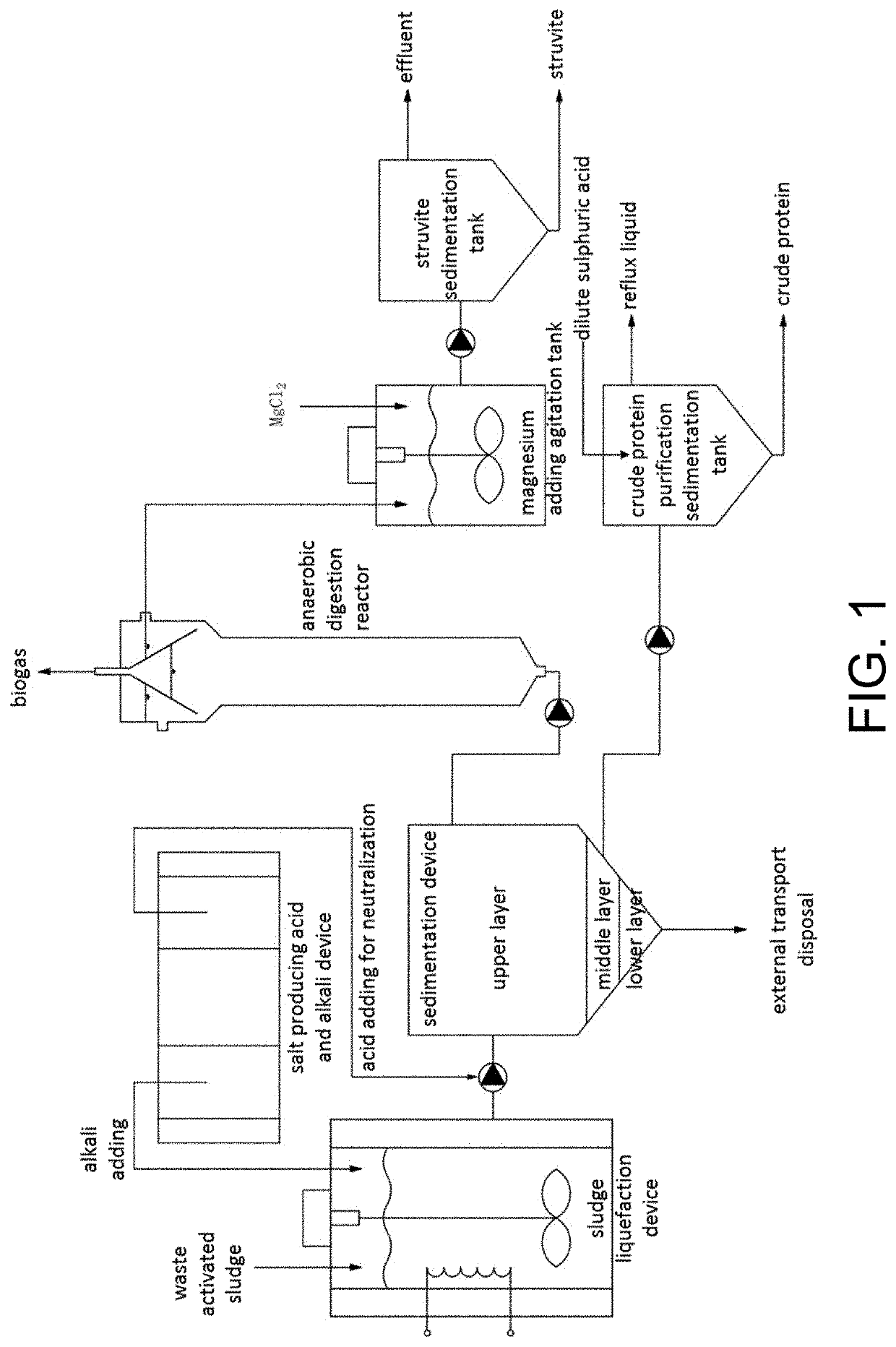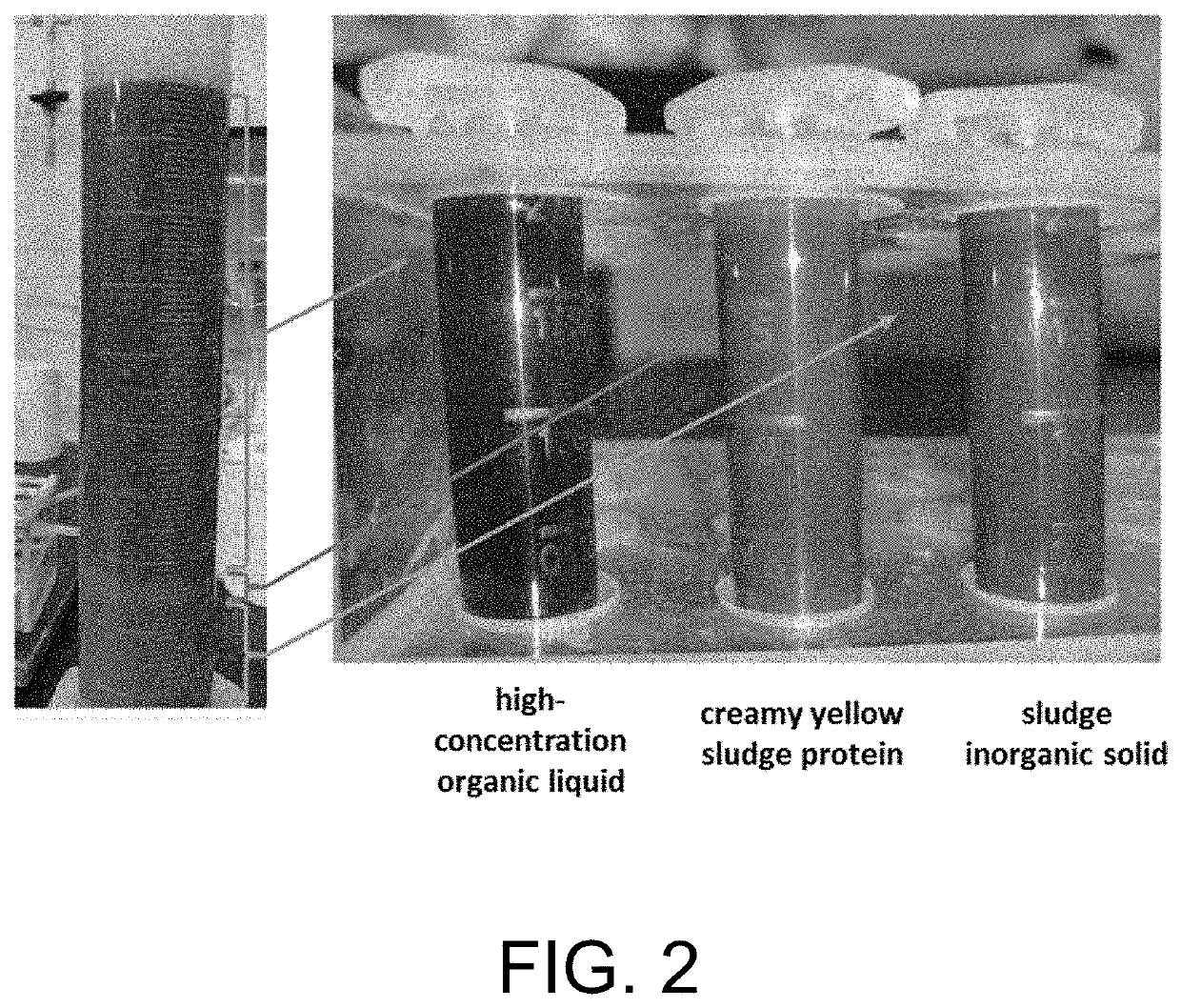Method for realizing sludge safe disposal and resource recovery through sludge liquefaction and stratification
a technology of sludge liquefaction and resource recovery, applied in the field of sludge treatment, can solve the problems of destroying ecological environment, endangering human health, and high environmental risk
- Summary
- Abstract
- Description
- Claims
- Application Information
AI Technical Summary
Benefits of technology
Problems solved by technology
Method used
Image
Examples
embodiment 3
ted Sludge Rapid Treatment and Resource Recovery
[0085]1. Experimental Method
[0086](1) The waste activated sludge was concentrated to obtain a concentrated sludge with a total suspended solids content of 30 g / L;
[0087](2) According to a ratio of 100 mmol:1 kg concentrated sludge, NaOH was added into the concentrated sludge for a liquefaction treatment, which was reacted for 70 min at 140° C.; hydrochloric acid was added to adjust pH value of the sludge after the liquefaction treatment to be neutral;
[0088](3) A static natural sedimentation was performed on the mixture in step (2) and substances of three layers consisting of an upper layer, a middle layer and a lower layer were obtained;
[0089](4) The liquid phase of the upper layer in step (3) was added to an up-flow anaerobic sludge bed reactor for an anaerobic digestion treatment, the anaerobic digestion reactor was set with an operating temperature of 40° C. and a retention time of 24 h, with a volume loading of 10.5 kg COD / (m3·d), a...
embodiment 4
ted Sludge Rapid Treatment and Resource Recovery
[0103]1. Experimental Method
[0104](1) The waste activated sludge was concentrated to obtain a concentrated sludge with a total suspended solids content of 30 g / L;
[0105](2) According to a ratio of 200 mmol:1 kg concentrated sludge, NaOH was added into the concentrated sludge for a liquefaction treatment, which was reacted for 70 min at 170° C.; hydrochloric acid was added to adjust pH value of the sludge after the liquefaction treatment to be neutral;
[0106](3) A static natural sedimentation was performed on the mixture in step (2) and substances of three layers consisting of an upper layer, a middle layer and a lower layer were obtained;
[0107](4) The liquid phase of the upper layer in step (3) was added to an up-flow anaerobic sludge bed reactor for an anaerobic digestion treatment, the anaerobic digestion reactor was set with an operating temperature of 35° C. and a retention time of 30 h, with a volume loading of 12.3 kg COD / (m3·d), a...
PUM
| Property | Measurement | Unit |
|---|---|---|
| temperature | aaaaa | aaaaa |
| hydraulic retention time | aaaaa | aaaaa |
| reaction temperature | aaaaa | aaaaa |
Abstract
Description
Claims
Application Information
 Login to View More
Login to View More - R&D
- Intellectual Property
- Life Sciences
- Materials
- Tech Scout
- Unparalleled Data Quality
- Higher Quality Content
- 60% Fewer Hallucinations
Browse by: Latest US Patents, China's latest patents, Technical Efficacy Thesaurus, Application Domain, Technology Topic, Popular Technical Reports.
© 2025 PatSnap. All rights reserved.Legal|Privacy policy|Modern Slavery Act Transparency Statement|Sitemap|About US| Contact US: help@patsnap.com


